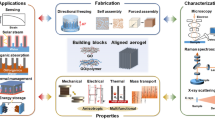Abstract
As alternatives to precious gold/platinum electrodes, graphene-based ionic polymer-metal composite actuators were successfully demonstrated by reduced graphene oxide and direct grown graphene on both sides of the perfluorinated sulfonic acid polymer layer using electronic spray coating and wet transfer methods. In addition, a platinum electrode was prepared as a reference. We characterized the electrical and structural properties of the graphene electrodes using a four-point probe system and atomic force microscopy. The static actuation ranges were analyzed, and a modeling procedure was carried out to obtain the linear curvature–voltage relations. Furthermore, the periodic actuation range was dynamically tested to evaluate the changes in the actuation performance over time. The experimental results showed that the reduced graphene oxide electrodes are a good alternative to platinum electrode that provide better flexibility and restoration of the original shape. And also direct grown graphene electrode is also valuable to access the stacked actuator owing to the hydrophobic sub-nanometer electrode.




Similar content being viewed by others
References
Abdel Aal N, Ahmed Al-Hazmi F, Al-Ghamdi A, Al-Ghamdi AA, El-Tantawy F, Yakuphanoglu F (2015) A novel facile synthesis and electromagnetic wave shielding effectiveness at microwave frequency of graphene oxide paper. Microsyst Technol 21:2155–2163
Hummers WS, Offeman RE (1958) Preparation of graphitic oxide. J Am Chem Soc 80:1339
Im KH, Choi H (2014) Electroactive polymer actuator based on a reduced graphene electrode. J Korean Phys Soc 64:623–626
Kim KS, Zhao Y, Jang H, Lee SY, Kim JM, Kim KS, Ahn J, Kim P, Choi J, Hong BH (2009) Large-scale pattern growth of graphene films for stretchable transparent electrodes. Nature 457:706–710
Kim J, Jeon J-H, Kim H-J, Lim H, Oh I-K (2014) Durable and water-floatable ionic polymer actuator with hydrophobic and asymmetrically laser-scribed reduced graphene oxide paper electrodes. AcsNano 8:2986–2997
Novoselov KS, Geim AK, Morozov SV, Jiang D, Zhang Y, Dubonos SV, Grigorieva IV, Firsov AA (2004) Electric field effect in atomically thin carbon films. Science 306:666–669
O’Halloran A, O’Malley F, McHugh P (2008) A review on dielectric elastomer actuators, technology, applications, and challenges. J Appl Phys 104:071101–071110
Oguro K, Kawami Y, Takenaka H (1993) Actuator element. US Patent No. 5268082
Oguro K, Kawami Y, Takenaka H (1992) Bending of an ion-conducting polymer film electrode composite by an electric stimulus at low voltage. Trans J Micro Mach Soc 5:27–30
Shahinpoor M (1992) Conceptual design, kinematics and dynamics of swimming robotic structures using ionic polymeric gel muscles. Smart Mater Struct 1:91–94
Shahinpoor M, Kim KJ (2001) Ionic polymer-metal composites: I. Fundamentals. Smart Mater Struct 10:819–833
Shun Mao S, Lu G, Chen J (2015) Three-dimensional graphene-based composites for energy applications. Nanoscale 7:6924–6943
Yang W, Choi H, Choi S, Jeon M, Lee S (2012) Carbon nanotube—graphene composite for ionic polymer actuators. Smart Mater Struct 21:055012–055017
Acknowledgments
This research was supported by the National Research Foundation of Korea (NRF) grant funded by the MSIP and Bio-Mimetic Robot Research Center funded by Defense Acquisition Program Administration (Grant Code: 2012M2C1A1026912 and UD130070ID).
Author information
Authors and Affiliations
Corresponding author
Rights and permissions
About this article
Cite this article
Im, K.H., Suh, YS. & Choi, H. Characteristics of electroactive polymer actuators using graphene electrodes. Microsyst Technol 22, 923–927 (2016). https://doi.org/10.1007/s00542-016-2905-4
Received:
Accepted:
Published:
Issue Date:
DOI: https://doi.org/10.1007/s00542-016-2905-4




